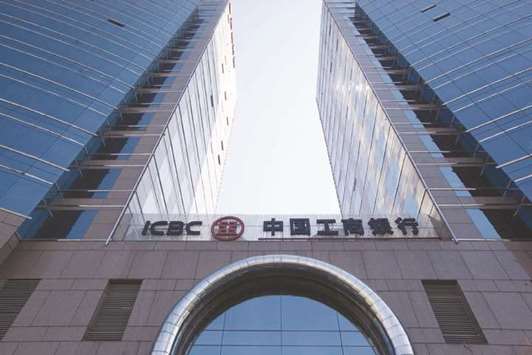Chinese banks are on the verge of surpassing a record for Tier 2 bond sales, heightening the risks to the country’s financial system as lenders show few signs of dialling back on cross-holdings of each other’s debt.
Onshore Tier 2 bond offerings so far this year have already reached 306bn yuan ($46bn), and are just 39bn yuan shy of the record in 2014, according to Bloomberg-compiled data.
Industrial & Commercial Bank of China has been planning an 88bn yuan sale this year, and hired lead managers for the deal, according to a person familiar with the offering, who isn’t authorised to speak publicly and asked not to be identified.
Lenders are speeding up sales to bolster their capital buffers as regulators enforce stricter methods of capital assessment to control financial-sector risks. But bankers and analysts say that with much of this onshore bank debt being bought by the lenders themselves, instead of by a broader range of investors, this adds to systemic risk piling up in the financial system.
“Commercial banks are still the main buying force of onshore Tier 2 bonds, and the centralised holdings of such capital instruments within the banking system means it’s going to be difficult to diversify the risks,” said Yang Yang, a senior financial institution analyst at China Chengxin International Credit Rating Co in Beijing.
Among other Chinese state-owned lenders, Agricultural Bank of China priced a 40bn yuan Tier 2 offering last week with coupon of 4.45%, and Bank of China is said to have hired underwriters for a potential Tier 2 bond sale of as much as 60bn yuan, according to people familiar with the offering.
The majority of Tier 2 notes are bought by banks, via their wealth management products, said Wang Yifeng, a Beijing-based analyst at China Minsheng Banking Corp’s research institute. According to data from China Central Depository & Clearing Co, about 76% of the 1.09tn yuan of Tier 2 notes outstanding as of August were held by funds institutions, a category that includes the wealth management vehicles of the banks.
Approximately 23% of the outstanding notes were owned by commercial banks directly. Investments in Tier 2 capital instruments above 10% of the net Core Tier 1 capital of the bank will result in a full deduction from regulatory capital at the corresponding tier, according to measures from the China Banking Regulatory Commission in 2012.
“By holding the Tier 2 bonds via off the balance sheet wealth management products, the banks could avoid the capital deduction regarding their investments in such instruments,” said Le Xia, an economist at Banco Bilbao Vizcaya Argentaria in Hong Kong. “But the regulator may consider to include these holdings under its scrutiny down the road, given the rising cross-holding risk.”
Regulators are trying to move risk away from the banking sector towards institutional investors, said Sebastien Domanico, global head of debt capital markets at Credit Agricole. More overseas Tier 2 sales would help diversify the current cross-holding risks, he said.
“Offshore issuances are a vital part of risk management for any major Chinese financial institution,” and should be “no exception” to China’s plans to develop its offshore market, as its banks already have large dollar businesses and are keen to further expand their European franchises, Domanico said.
A flurry of Tier 2 supply may come from other commercial banks amid a stricter macro prudential assessment of their capital levels, said Yang at China Chengxin.
“Given the amount of outstanding subordinated debt and Tier 2 bonds that are counted as regulatory capital is declining every year, the banks are under a certain pressure to speed up capital raising,” she said.

The logo for the Industrial & Commercial Bank of China is seen outside a branch in Beijing. ICBC has been planning an 88bn yuan sale this year, and hired lead managers for the deal.


